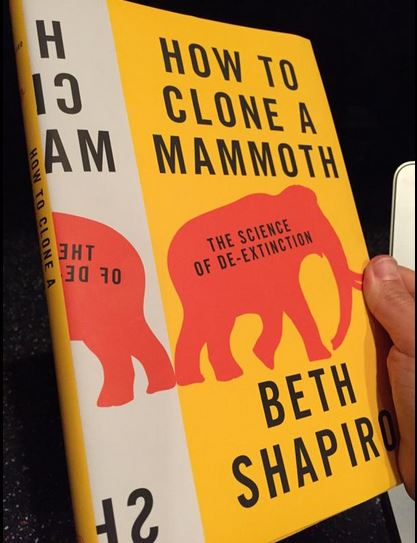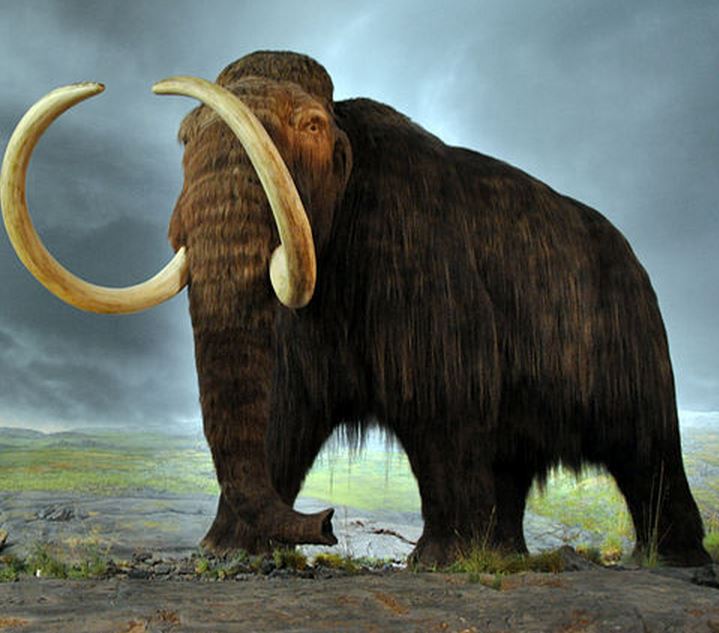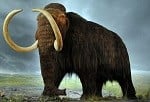The science says we could bring extinct species like mammoths back to life by cloning them, associate professor of ecology and evolutionary biology at the University of California, Santa Cruz, Beth Shapiro explains in her new book “How to Clone a Mammoth”. As long as we have all their DNA.
There is no way we could clone dinosaurs, because their DNA is lost for good. However, we might be able to do something with more recently-extinct species, such as mammoths, passenger pigeons and the gastric-brooding frog.
In her new book, Prof. Shapiro walks the reader through the fascinating and controversial process of de-extinction. She explores which species should be brought back, how to sequence their genomes, and how to anticipate which populations, that have been overlooked in the wild, could be revived.

Prof. Shapiro explains that according to the science, cloning extinct species is possible. (Image: Twitter)
“I question if it’s something we should do at all, for many ethical and environmental reasons. I’m trying to separate the science from the science fiction, because too much of what people hear is science fiction.”
“In a field that’s so full of hyperbole, people should be armed with the facts so they can make informed decisions.”
As far as completely ‘cloning’ a mammoth, which would mean creating an animal with an entire mammoth genome, mammoth chromosomes, and mammoth cells, that is not possible, Prof. Shapiro said.
We could not clone a mammoth because geneticists have only been able to recover fragments from frozen specimens. It is possible, however, to insert mammoth genes into a modern elephant’s genome to create an animal with certain mammoth traits.
Prof. Shapiro said:
“If the point is to put it in a zoo, then we should probably stop right now. If the point is to restore diversity to preserve an ecosystem that doesn’t function well without a certain animal, then maybe it’s worth considering.”
Creating a Woolly Mammoth-like Asian Elephant
Geneticists at Harvard University announced in March that they managed to insert 14 Woolly Mammoth genes into the DNA of a live Asian Elephant. They say they are a step closer to being able to create a living semi-clone of the 6-ton prehistoric giant.
Professor of genetics, George Church, and team analyzed mammoth DNA from very well preserved specimens collected on Wrangel Island in the Arctic Ocean, between the East Siberian Sea and Chukchi Sea.
From those specimens, the scientists managed to reproduce identical copies of fourteen mammoth genes, which they then integrated into a modern Asian elephant’s genome, where they functioned as normal DNA.
The geneticists used a modern technique, called clustered regularly interspaced short palindromic repeat (CRISPR), that allows them to edit DNA precisely, i.e. take out parts of modern elephant DNA and replace them with mammoth genetic material.
Prof. Church said to the Sunday Times:
“We prioritised genes associated with cold resistance including hairiness, ear size, subcutaneous fat and, especially, haemoglobin (a red protein responsible for transporting oxygen in the blood). We now have functioning elephant cells with mammoth DNA in them.”

The modern Indian elephant is closely related to the Woolly Mammoth. (Image: Wikimedia)
The modern Asian elephant is a much closer relative to the extinct Woolly Mammoth than the African elephant is. They both share a common ancestor that became extinct about 2.5 million years ago.
Hunting nearly killed off all mammoths during the last Ice Age. Some of them survived on Wrangel Island until approximately 3,300 years ago.
There are currently three scientific revival teams competing to reconstruct a whole mammoth gene. When this is done, so the theory goes, real mammoths could be recreated.
From Asian elephant to Woolly Mammoth
The Harvard Gazette quotes a 2014 lecture by Prof. Church where he explained that although the Woolly Mammoth and Asian elephant are close relatives, there are some key differences, the main one being tolerance to low temperatures.
To improve an Asian elephant’s cold tolerance so that they could thrive in Arctic conditions, many features would need to be altered, such as adding a double fur coat, a thick layer of fat, and reducing ear size to minimize heat loss.
Citation: “How to Clone a Mammoth: The Science of De-Extinction,” Beth Shapiro. Princeton University Press. Hardcover ISBN: 9780691157054. E-book ISBN: 9781400865482.
Video – What is de-extinction? Prof. Shapiro explains

